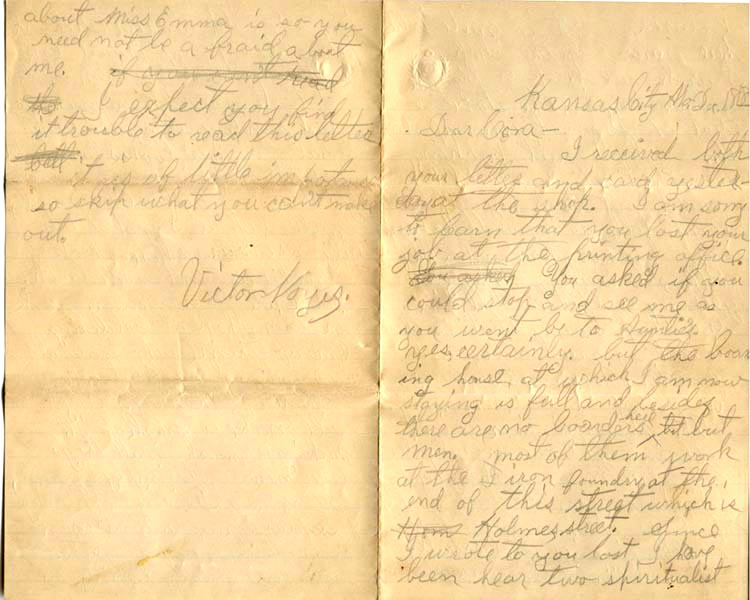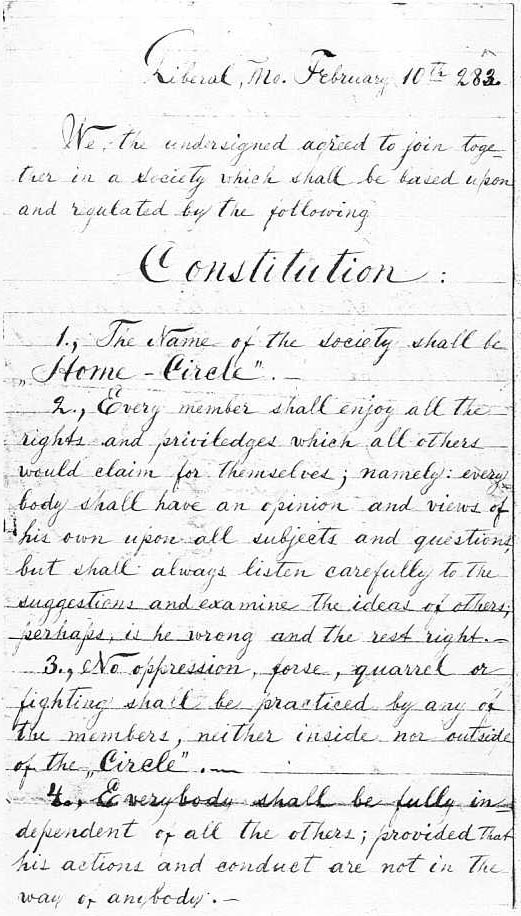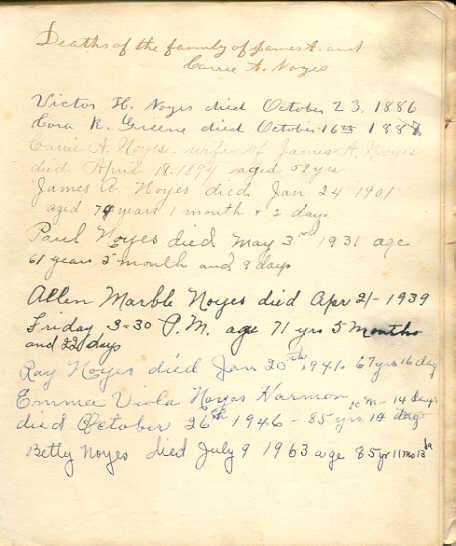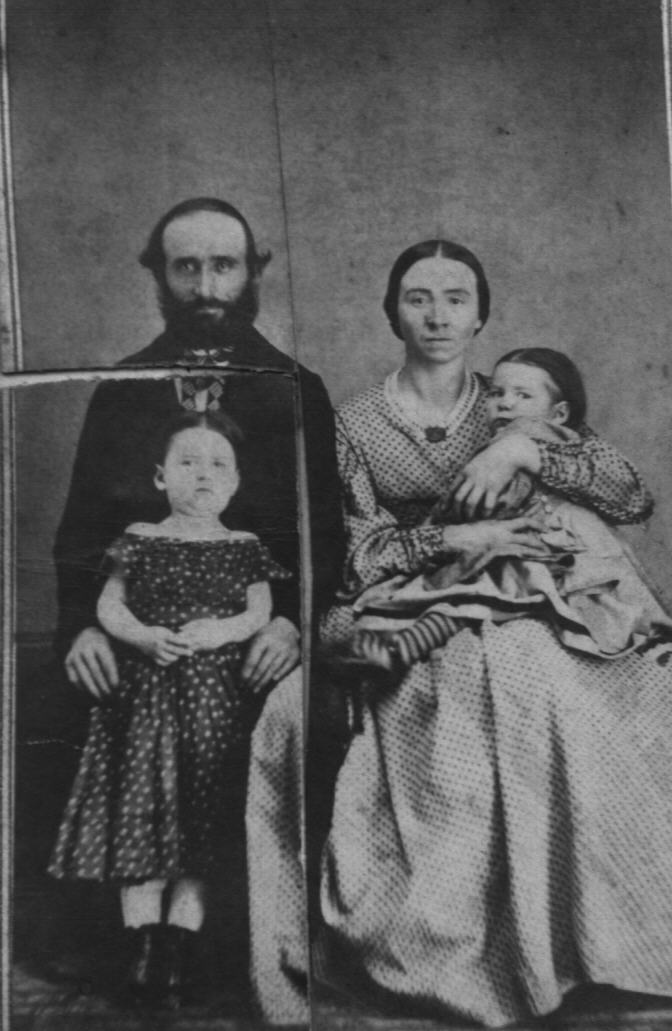Tag: cora rachel noyes
-

Victor Hugo Noyes to Cora Noyes, December 1883
The date on the letter looks like Dec 1887 but Victor died in 1886. The date has been determined to be 1883, it being known that Victor was working in a tin shop in Kansas City in March of 1884. “I have many more envelopes than letters, and none of the letters were enclosed in…
-

CARRIE NOYES DREAM, Feb 7 1885
Nancy Benton, who had this in her collection, notes Caroline Atwell Noyes (line of the blog’s author) had cut apart an envelope that had contained a letter addressed to herself and written this dream on the inside. The dream concerns her daughter Cora going on a trip, and the numbers 87. It was a powerful…
-

Noyes Burials at Liberal City Cemetery
At Find-a-Grave, an individual has placed up memorials for Liberal City Cemetery, including members of the Noyes family. There are (sadly) no photos, just names and inscriptions on the headstones. The person must not have been a member of the family as family members are unlinked. I’ve sent a request for them to be linked,…
-

Emma Viola Noyes Harmon
Emma, daughter of James Allen Noyes and Caroline Atwell, was born Dec 15 1860 in Wakeshma, Kalamazoo, Michigan. On June 9 1878 in Anna, Union, Illinois, Emma married Orrin Ellie Harmon who would one day write a slim book on the history of the freethought town of Liberal, Missouri, where her family settled and where…
-

Cora Rachel Noyes Greene
Original photo of Cora Rethouched Tinted Cora, daughter of James Allen Noyes and Caroline Atwell, was born 19 April 1863, at “1 and 1/4 oclock” in Wakishma, Michigan. She married Frank GREEN, 30 March 1886, at the age of 23, in Junction, Kansas. She died in childbirth, 16 Oct 1887. Cora died in childbirth. Her…
-

Noyes Family Constitution
Being Free-thinkers who had been associated with socialist experiments and who had moved to Liberal, Missouri, which was expressly for liberals, it’s not surprising that the Noyes family would form their own family constitution. The document displays the year as being 283. The Dictionary of Missouri Biography notes that Liberal was utilizing a different dating…
-

CAROLINE ATWELL NOYES’ DIARY OF TRIP FROM ANNA, IL TO LIBERAL, MO IN AUGUST 1882
In August of 1882, James Allen Noyes and wife Caroline Atwell, set out from their home in Anna, Union, Illinois for their new home in Liberal, Barton, Missouri, a town founded by George H. Walser in 1880 and intended for freethinkers, “no priest, preachers, saloon, God, or Hell” welcome. With Caroline and James would have…
-

Family Record of James A. Noyes
Family Record of James A. Noyes James A. Noyes was born in Ann Arbor Michigan December 22, 1826 Carrie Atwell wife of James A. Noyes was born in Waterbury Vermont, October 2, 1835 Married in Brady village Kalimazoo Co. Michigan June 28, 1859 Their children Emma Viola Noyes was born Wakishma Michigan December 15th 4…
-

Noyes Record of Deaths of the Family of James A. and Carrie A. Noyes
Deaths of the family of James A. and Carrie A. Noyes Victor H. Noyes died October 23 1886 Cora R. Greene died October 16th 1887 Carrie A. Noyes wife of James A. Noyes died April 18 1894 aged 58 yrs. James A. Noyes died Jan 24 1901 aged 74 years 1 month and 2 days…
